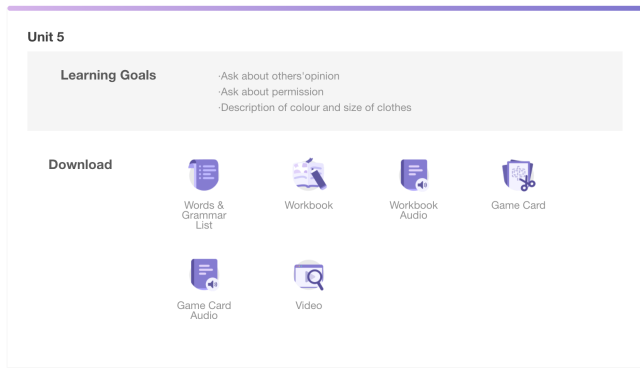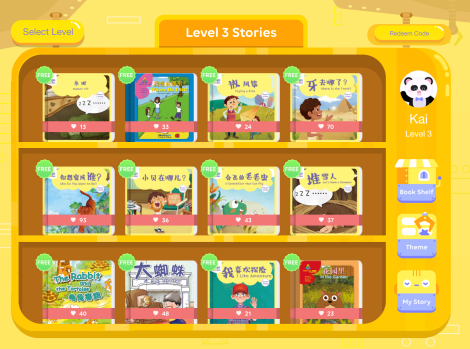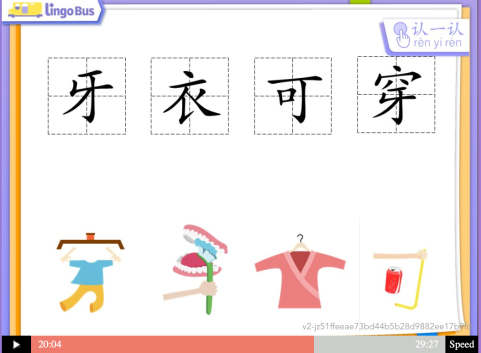Learn Chinese for Kids Online While Having Fun 2020
If there is anything positive from COVID-19, one might be that parents are starting to be more open-minded about online learning options. While parents used to question the effectiveness and necessity of e-learning, they have now resorted to actively search for online platforms that could support their child’s learning at home. Online piano lessons, art classes, writing tutorials, language learning courses… parents are now discovering a wide array of educational opportunities they never paid attention to before.

During Singapore’s ‘circuit breaker’ when schools and learning centres were closed for 3 months, I tested and trialed a few online platforms that opened my eyes to how e-learning has evolved. I even purchased learning packages from one of the major Chinese learning platforms: Lingo Bus, in the hopes that Kai can keep up with his Chinese during the lockdown. The results of having Kai gone online to learn Chinese are beyond what I had expected.
In this blog post, I will describe my experience with LINGOBUS and what I like about it:

Lingobus’ theme-based units provide a fun and meaningful way to learn about the world in Chinese! Each theme is designed so that it focuses on core vocabulary, key phrases and expressions that are emphasised throughout the unit.
Kai first started Lingobus on the “Go Camping” unit where he learned, through Lingbus’ interactive animations and teacher’s storytelling, everything from what to pack for a camping trip to things like starting a fire with a magnifying glass! It was precisely a fun unit because Kai has never gone camping before, so he was fascinated by the world he was immersed in during the 30 min lesson.
Although it was a ‘camping themed unit’, it was still flexible enough in that basic words, expressions and structures could be taught. With the new vocabulary, Kai learned to to describe a sequence of events using “先。。。然后。。。最后 ” which was very useful.


The lesson begins with a short greeting, and a catchy theme song that covers vocabulary covered in the unit. The theme song is a fun way to encourage Kai to sing using the target vocabulary and sentence structure, without realizing that he is ‘practicing Chinese’.
In this. video, Kai sings the “Go Camping” theme song where the focus of the unit was on sequence words such as 先。。。然后。。。最后。
In a different unit, Kai learned the structure 太。。。了 which is also reflected in the theme song.
The interactive nature of the lesson is thoughtfully designed to encourage students to listen and speak. In every lesson, there are always some elements of the screen where Kai either needs to draw, or click and drag into place. These interactive elements help Kai to show his understanding of the content.
In this part of the lesson, Kai had to listen to the name of the clothing item, and drag the right item on the laundry line.
In this other lesson, Kai needed to count the number of groceries items, and write the number in the box!


So far on Lingobus, Kai has had 3 ‘frequently used’ teachers for his lessons: Lulu, Lily and June and they have been instrumental in bringing the online lessons to life. Each teacher naturally has different personalities and bring their own uniqueness, with slight variations in accents, and different incidental language. The rotation of teachers is a great way to make Kai feel comfortable interacting with different people.
Far more than speaking and listening skills, Kai also picked up communication skills through his one-on-one interactions with the experienced instructors. He enjoys talking with them, telling jokes, asking questions and even showcasing his toys to which his instructors patiently listens and responds. I also appreciate that they constantly remind Kai to speak in full-sentences. The teachers are familiar with the lesson content, facilitates and goes at a pace that Kai can follow easily. They take time to interact with Kai informally, laughing at his jokes, and asking him questions. This personal touch reminds us that language is used to communicate and build relationships, and in real-life, does not follow a plan or a script.

Lingobus’ curriculum is well designed, and each unit establishes clear learning goals for parents to see.

Each unit also comes with downloadable resources to support Kai’s learning. The “Words & Grammar List” includes target vocabulary, sentence structures, expressions, as well as Chinese characters to be learned.



We always preview the content of a new lesson to prepare for class, and review using the study resources to optimize the lesson.
Lingobus also gives users access to their library where Kai enjoys listening to the books categorised by themes and levels!

And that’s not all! There is one section on Lingobus that I particular like, which is the collection of animated Chinese characters! When drawing flashcards for Kai and Kei, I now refer to this section to see whether I can copy their pictures!
Some other questions parents have:

The last part of each lesson is dedicated to teaching a new Chinese character, and as mentioned earlier there are certainly resources to support learning it, but I’d say the focus is still on vocabulary, expressions and sentence structures (through listening and speaking).


I personally think exposing children to both traditional and simplified doesn’t do any harm, and you can even take it as an opportunity to point out the differences between the two. Lingobus lessons just serve as a way to introduce children to the Chinese language, which include Chinese characters, and not necessarily the only tool to teach your child one form or the other.
All in all, LINGOBUS has been an amazing find for me, and I’ve thoroughly enjoyed every lesson that Kai takes. For the price of US$20 for 30 minutes, it shouldn’t even be set as a ‘last minute’ option for kids who are stuck at home with school closure. It should be part of your child’s daily Chinese-learning routine. Even for an experienced Mandarin teacher, it would take years of experience and hours of thoughtful preparation of materials to encourage listening and speaking in such a fun and interactive way. If you already have a Mandarin teacher with your child, online, I am pretty sure they do not have songs and animations that would wow you and your child to the point that they sing and learn in Chinese without reluctance!

If you’d like to give LINGOBUS a try, you can click the button below to try a FREE 1-on-1 demo class:


